*This post contains affiliate links, if you click a link I make a small commission and you help support the blog
Have you ever been stuck in a cubicle, or sitting in standstill traffic, and wished you could just get up and go for a long walk in the woods? Or been out on a day hike and wish it was one of the longer hikes, disappearing into nature for a while?
I initially learned about thru-hiking from day hikes on the Appalachian Trail. But it wasn’t until I started reading Keith Foskett’s books that I truly fell in love with the idea of doing a thru-hike. Ok, let’s be honest, I want to do every thru-hike I could possibly imagine. Starting with the Camino.
I haven’t had the opportunity to try out my thru-hiking skills, but I think it’s important to begin planning for something so monumental. In this post we are going to take a 30,000-foot view of the long-distance hiking world, including the planning process and interviews from people who have been through it and their top tips for a successful thru-hike.
Pick a hike
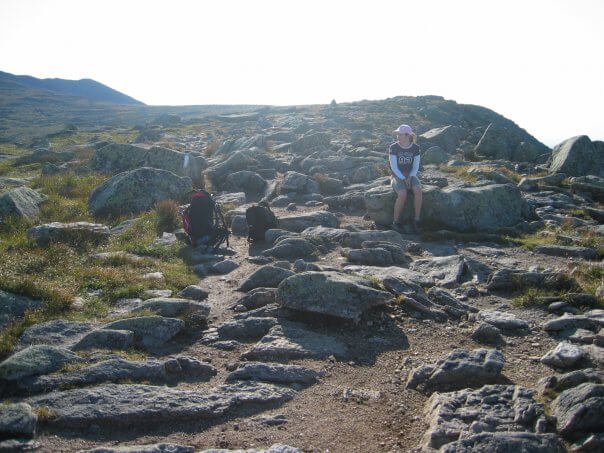
First, what constitutes a thru hike? This has produced much debate in the hiking world. In general, this means covering long distances within a pre-defined length of time (typically limited by the approach of winter or other weather-related causes and generally longer than a long weekend). However, you could get into a serious debate of whether hitching hiking to skip sections or taking a shorter side trail to reach town instead of the long-distance trail constitutes finishing a true “thru-hike.”
So, which of the long distance trails will you choose? There are so many options around the world, and some close to your own backyard. In the USA alone, there is the Appalachian Trail, the Pacific Crest Trail or PCT, the Continental Divide Trail and the North Country National Scenic Trail, to name a few.
In other parts of the world there are hikes like Hadrian’s Wall in England, the Komono Kudo in Japan, the hike across Jordan, and of course the Camino de Santiago. All of these thru hikes offer something different, are different lengths and require different styles of planning. Let’s look at some of them a little closer.
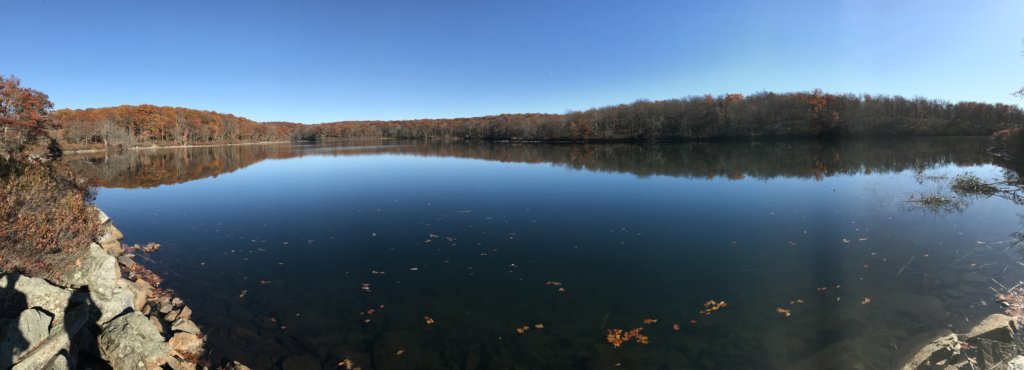
The Camino de Santiago, or the Way of St. James, is a network of pilgrimage trails all over Europe. You can start in as far away as England or from various points in France or take the main leg in Spain. All lead you to Santiago de Compostela, the resting place of St. James. The most popular route being the Camino Frances, a 500-mile trek from St. Jean-Pied-du-Port in France to Santiago. If you are looking for solitude, you may not find it here. If you are looking for rugged wilderness you definitely will not find it here. This is a popular route, hiked by thousands of people, with towns dotting the trail that allows you to stay in hostels therefore requiring less gear and less physical fitness, since there is some significant road walking involved.
For something longer there is the North Country National Scenic Trail, at 4,600 miles and spanning 7 states from the middle of North Dakota to the Vermont border of New York. This trail has a little of everything traversing National Grassland, 10 National Forests, more than 150 federal, state and local public lands, near 3 great lakes, past farmland, through cityscapes, over rivers and through the Adirondacks. This requires immense preparation, mentally, physically and gear wise.
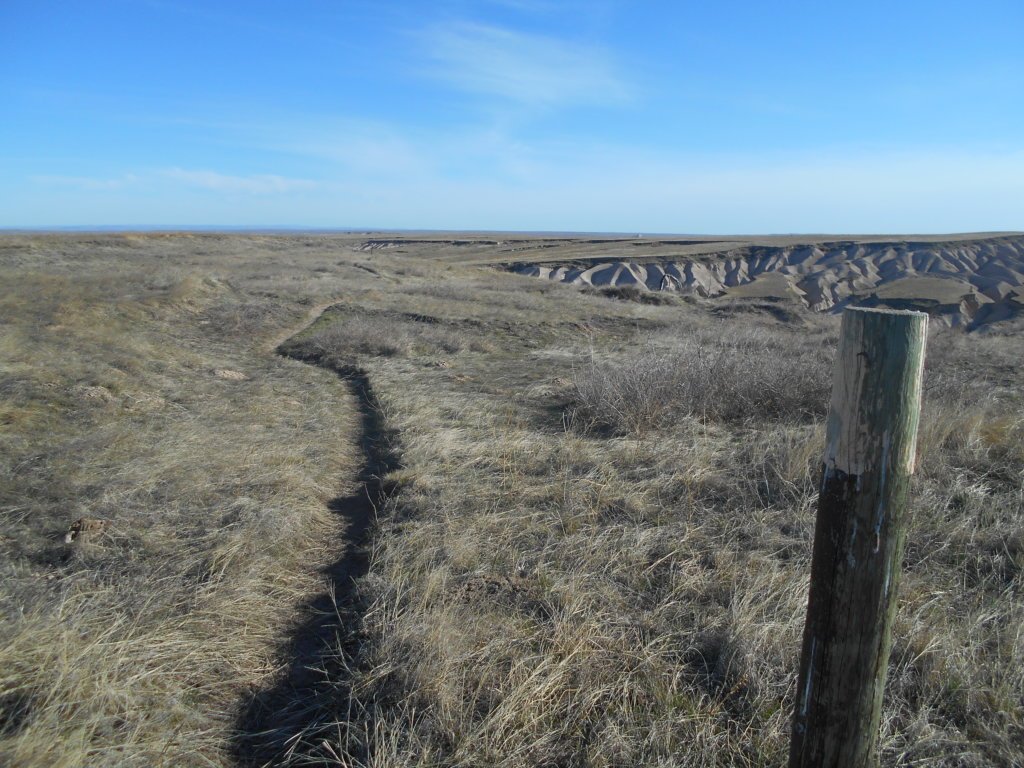
It really depends on your personal preferences and what you are looking for in a great hike. For some of these hikes, the most important things to consider if you are a new thru-hiker include how much time you have to dedicate to a longer hike, this will determine which hike you choose. You also need to consider what time of year you plan to do the hike and how much elevation gain you might be looking at, because weather will play a significant role in your hike, especially when mountains are involved.
Do your research
Once you have decided on which trail you want to hike, you can explore the sites dedicated to those particular trails and get yourself some guide books too. The Appalachian Trail Conservancy has a very complete site to help you prepare for taking on the entirety of the Appalachian Trail (AT). On this site you can find what to expect, including the fact that only 1 in 4 people complete the trail every year. There is even a backpacking course to help you prepare for a thru hike of the AT, but sign up early these seem to book up fast.
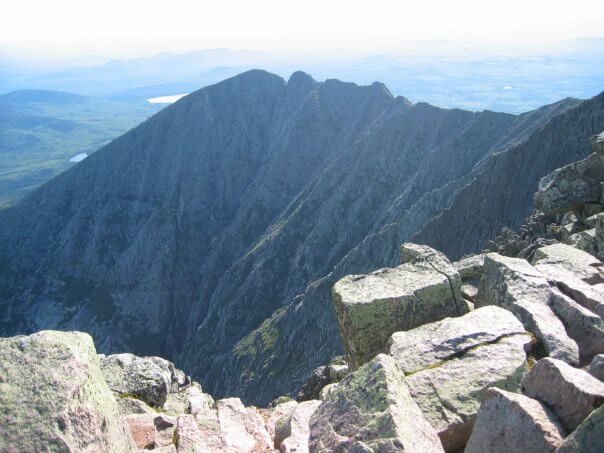
There is also a huge amount of information on the logistics, such as permits, transportation, camping regulations, registering for your hike, and where you will begin your hike. You will also need to plan your resupply points, depending on the trail you choose this is more important for some than others. For example, on the Pacific Crest Trail you will need to time your resupplies, meaning you will need to pre-pack boxes with food, first aid supplies, toilet paper, whatever you will need and have them mailed to strategic locations along the trail and time it so the box arrives when you do. Other trails, such as the Camino de Santiago, have so many towns dotted along the trail that resupply boxes are not quite as important to your planning.
Preparing your gear
Once you have figured out the logistics of your trail of choice, then you need to start think about what gear you are going to need. The biggest question being how you can pack all of these things and keep the weight low. Lots of companies now make ultralight packs, and if you can minimize the total weight of your pack and the things you need to carry on your back the easier it will be in the end. Considering how many zero days you might take will help you prepare how much clothing you may (or may not) need.
This reminds me of the book Wild, by Cheryl Strayed, where she nicknamed her pack “Monster” because it was so heavy she couldn’t get it onto her back without some serious maneuvering. Having an overweight pack could seriously make or break your hike.
There is a lot of great information on how to pack for your thru hike. For a little inspiration, here are a few I found useful:
https://www.backpacker.com/skills/appalachian-trail-packing-list
https://www.theactivetimes.com/how-pack-smart-your-first-thru-hike
Physical activity and mental preparation
Now that you have your pack down to a fine science, it’s time to think about some of the other aspects of the thru hike, fitness level, both physical and mental. As you plan you envision yourself going for a lovely stroll day-in-and-day-out, admiring the forests and views from mountaintops, reconnecting with yourself and nature. But it’s not all sunshine and roses, these treks should never be taken lightly. The best way to finish is to prepare in advance. No matter your experience level, whether it’s your first thru-hike or 5th, there are lots of different ways to prepare for hikes and avoid serious injuries on the trail.
There will be days where you will want to quit, particularly in the first week or two as there are steady increases of distance. There will be days where you will start to get into your head and think every sound is a bear creating severe anxiety. There will be intense rainstorms, snow, and bugs trying to eat you alive. Elevation changes that will leave your body screaming in pain and your legs like Jell-O. You are also going to stink. A stench worse than you could imagine could come off a person. And the hair! As a woman, you can forget shaving your legs and underarms, so you will slowly become a hairy monster just like the wildlife surrounding you.

Some hikers recommend being in good shape with lots of good build up of training, prior to attempting a long-distance hike. You will be using almost every muscle in your body so it’s important to prepare them prior to diving head first into a long-distance hike. You need endurance, stamina, strength to carry a pack every day, and the flexibility to put it all together. It’s a great opportunity to start a regime of regular walking, taking some shorter hikes. You should consider taking a full pack with you and adding things like yoga, strength training, and cardio, but there are a lot of different ways to get you there.
Consider Bill Bryson and his “Walk in the Woods”, where he and his extremely out of shape friend, Katz, attempted the AT. Katz’s struggles started early, due to a sedentary life and having treated his body like a playground for most of his life.
But you don’t have to take it from me on these points. I asked a couple of people who have completed various thru hikes to provide some input on these very topics.
Strider
“Strider” has completed both the North Country National Scenic Trail (2013) – 4600 miles and the Great Plains Trail (2016) – 2100 Miles. Below he answers my questions about completing a long-distance hike, to give you a perspective on what to expect.
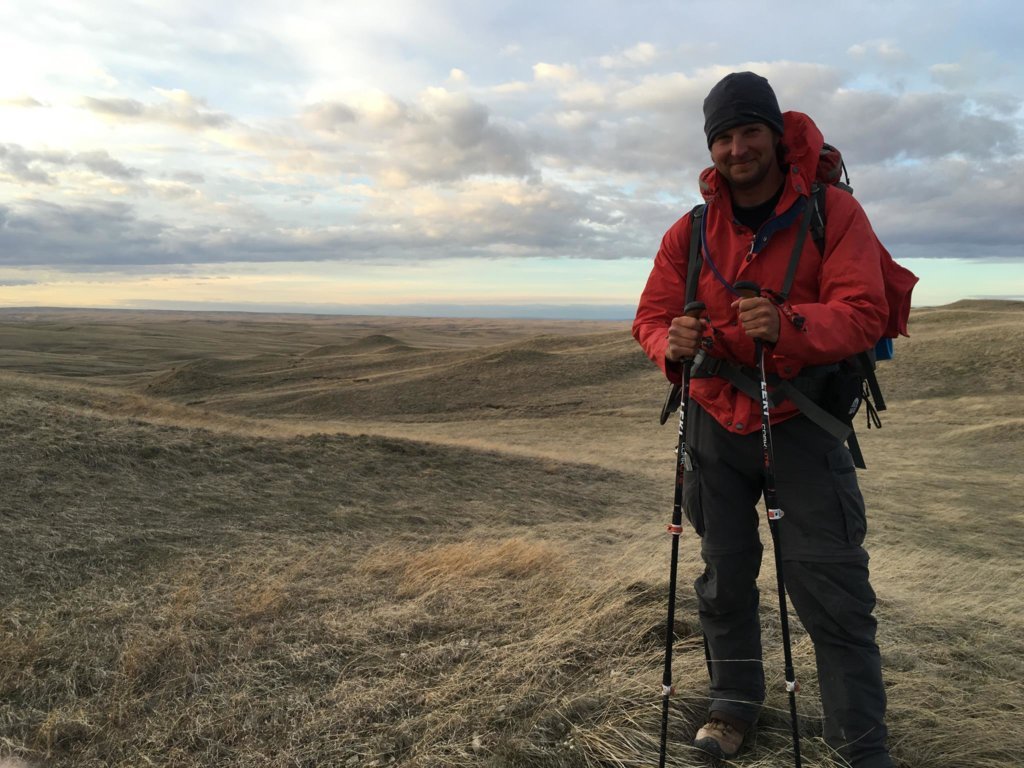
How did you prepare mentally and physically for the hike(s)?
For my first hike, I did practice runs the year before I started with an overly loaded pack to get used to carrying extra weight. I found that far more mental preparation was needed than physical. Being my first hike, I had doubts about what I was getting myself into and shutting down any negative thoughts was critical to my success. Being able to shrug off the bad days and focus on the long-term goal is the challenge.
What piece of equipment did you think you needed but never used?
I packed pretty well and ended up using everything I brought.
What was your favorite piece of gear (most useful, made life a little easier)?
When I give presentations, this question always come up. The most important piece of gear I think for anyone that is often overlooked is simply a separate set of clothes just for sleeping in. Keeping at least a shirt, pair of underwear and pair of socks that are kept dry in a waterproof sack is essential. This set of clothes should only be for sleeping so you remain warm and dry and night, reducing the risk of hypothermia. It doesn’t take much to get sick when you go to bed wearing wet sweaty clothes.
What was the hardest part about the hike?
Actually completing it! There are days you want to give up and staying mentally tough for months on end is a challenge.
What was the best part about the hike?
Despite the incredible scenery and the experience of just being out there, meeting the people was by far the most rewarding part of the journey.
What did it teach you?
I found out I was much more resilient than I ever thought I was, both mentally and physically. I also learned that for the most part, the people you encounter are good honest people. The news tends to focus so much on the bad stuff that sometimes you forget about the good everyday people that are around.
What advice would you give someone who is planning their first long distance hike?
Best piece of advice I can give is actually not for first hikes, but second and third hikes and however many more come after it. That advice is to start each hike with a clean slate, no expectations or assumptions. Each trail has its own unique character and challenges and if you compare each hike to a previous one, you are likely to be disappointed. Instead, appreciate each trail for what it is, and you’ll have a much more pleasurable experience.
Anything else you would like to add?
I came off my first hike with more confidence than I had ever had in my life. At the same time, the adjustment back to the synthetic world from the natural world. It takes many hikers several months to adjust to being “comfortable” again, and it can get lonely. Go into a hike knowing this may be a consequence.
How can people find you, to learn more about your hiking experience?
Website: www.stridernct.com
Facebook blog: www.facebook.com/StriderNCT/
I have a book about my 4600-mile journey over the North Country Trail titled “Thru And Back Again: A Hiker’s Journey on the North Country Trail”. It’s available on Amazon.
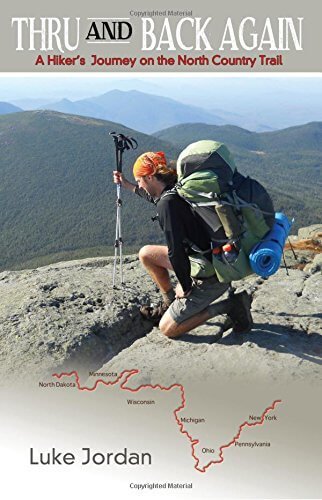
Laureen
Then I talked to Laureen who completed the Camino de Santiago Frances, also known as The Way of Saint James (as a side note there are several Camino’s all over Europe). The one she did last September, starting in France, from Saint Jean Pied de Port to Santiago Spain, a total of 486 miles.
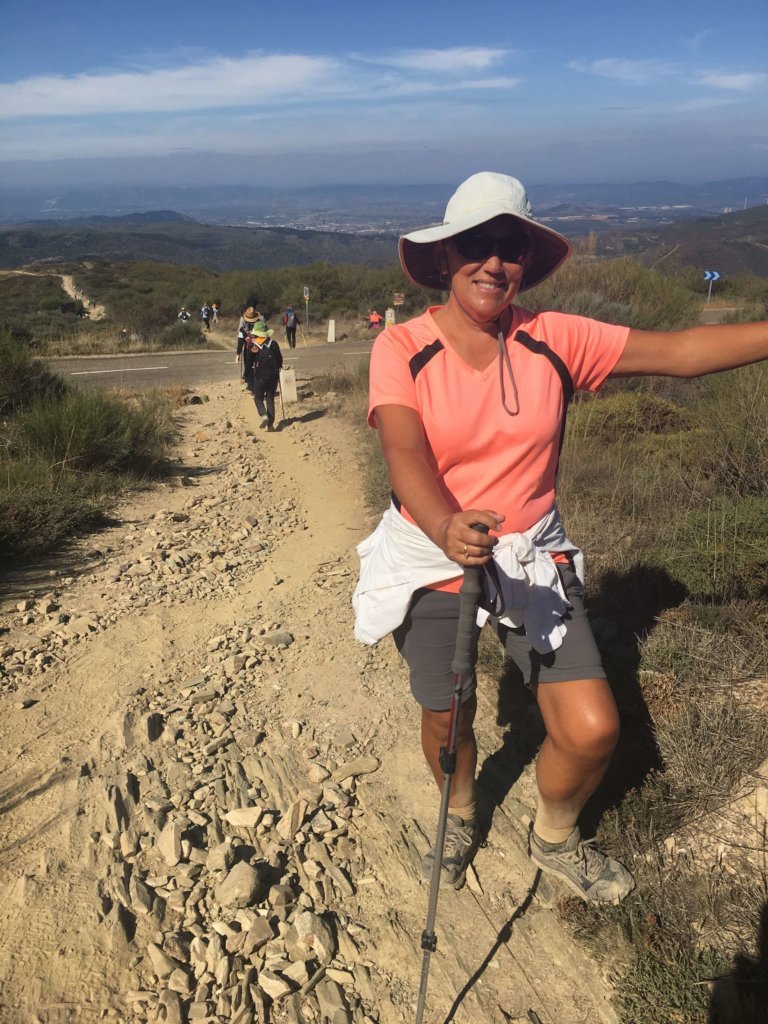
How did you prepare mentally and physically for the hike(s)?
We trained for this hike for about a year, hiking several times a week building up from about five-mile hikes to 15-mile hikes. I lost a lot of weight and was in great shape right before we started. Mentally I was still very nervous, both about being physically ready but also just about the unknown of tackling such an extreme undertaking. In hindsight I was overthinking – but of course hindsight is 20/20.
What piece of equipment did you think you needed but never used?
We spent a lot of time researching what people recommended you bring and packed pretty darn light. But I did not use a small clothes line I brought – there was always one available. I also did not use everything in my first aid kit. I could have left much of that behind. There were plenty of places to purchase anything you needed along the way. (Side note: this is what I was talking about above, it depends on the trail and what’s available along the way. Some trails require you to prepare resupply boxes and some have everything you need along the way).
What was your favorite piece of gear (most useful, made life a little easier)?
Hiking poles. These helped me so much. Not just for the incline and descents but also by keeping my hands at heart level my hands don’t swell up. I can’t image walking without them. (Side note: now that I also have my own hiking poles I have to completely agree with Laureen! I couldn’t go for even a short walk without my hands swelling but now that I have my poles, problem solved).
What was the hardest part about the hike?
The hardest part was mental. About eleven days in to what ended up being a 41-day odyssey I had a bit of anxiety as we started walking and I saw a sign with the mileage on it. This is when it really sunk in how far we still had to go. It took some effort to finally get my brain used to what we were doing – getting out of bed every day and walking 12-20 miles. Day after day. But then my body and my brain kind of kicked into gear. And suddenly all engines were firing on the same cylinder. It was easier from then on.
What was the best part about the hike?
The best part was walking side by side with my husband of 36 years, encouraging each other. Talking about the past, the future. Walking in silence. Admiring the sunrise, the meseta, the mountains, the vineyards as we trekked and fell in love all over again.
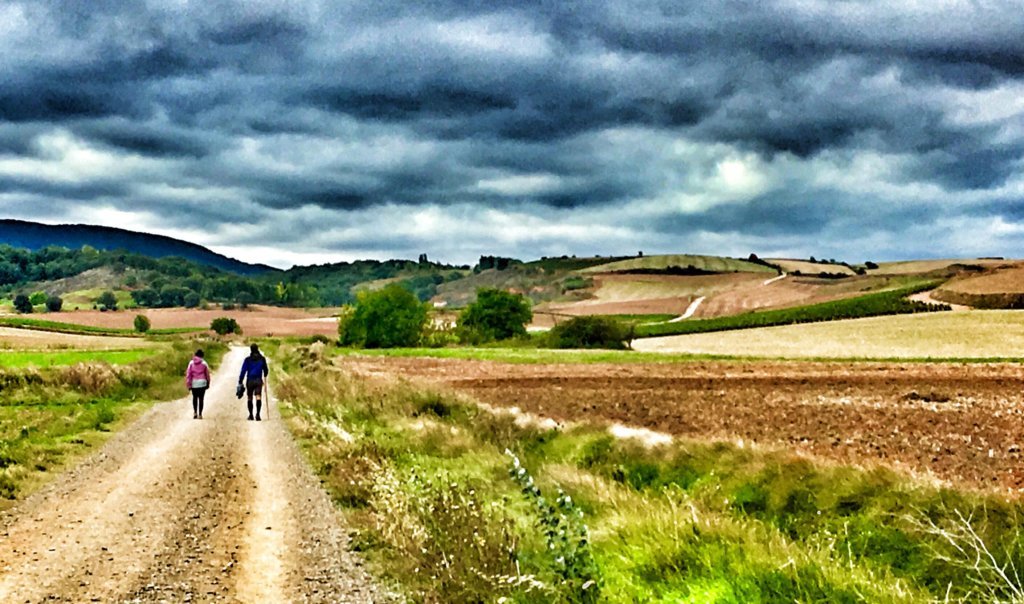
What did it teach you?
To be present. All though I had days where I was in a hurry, most days we sauntered. It was incredible to forget about stress and home and politics. Just to walk and know I was walking where, seriously, millions of pilgrims have walked before me. Pretty amazing.
What advice would you give someone who is planning their first long distance hike?
Physically you should allow rest days. We took one rest day a week – walking a total of 38 days and taking 4 rest days. Training is important, but don’t overdo it. Just about ten days before we started I had my first ever flair up of Plantar Fasciitis. It still plagues me to this day. I believe it came about from over training in those last few weeks.
Other advice that was helpful to me for the Camino specifically was I joined some Facebook groups where I could talk and learn from other’s who had walked before. I also read books and we downloaded maps and we felt pretty well prepared when the first day finally arrived.
Anything else you would like to add?
The Camino is an amazing experience. We enjoyed it so much we are doing our second one in October. This time 150-mile Porto to Santiago. I am not a religious person and I did not walk the Camino for religious reasons and yet, it was a spiritual experience. I learned how strong I am. How amazing I am. How much I can endure. I walked when it hurt. I peed in the bushes. I ate stale bread sandwiches. And I loved every minute of it (well almost every minute). We met people from around the world. Hundreds and hundreds of people, all walking for their own reasons. And it was amazing.
We learned about history and religion and nature and human nature. One day we walked in the pouring rain and at the top of a mountain there was a man selling hot coffee. I thought it was heaven. One day we were so exhausted we ate a raw zucchini in bed for dinner. One day we drank free wine from a tap alongside the trail at 8:00 in the morning. One morning we started before sunrise and on top of a mountain we watched the moon set to our left and the sunrise to our right. Spectacular. And the most amazing moment of all that still gives me goosebumps was waking before sunrise in the medieval town of Puente la Reina to a quartet of men in the street below my window singing hymns in Latin – a goodwill message for all the pilgrims. Unforgettable.
Where can people find you to learn more about this experience?
My blog is www.myfabfiftieslife.com
Facebook: https://www.facebook.com/MyFabFiftiesLife/
Twitter: https://twitter.com/FabFiftiesLife
Instagram: https://www.instagram.com/myfabfiftieslife/
Pinterest: https://www.pinterest.com/laureenlund/
I wrote so many blogs about the Camino experience but here are links to a couple. The rest can be found on my page under the topic Fab Europe.
Keith Foskett (AKA Fozzie – a nickname given in school)
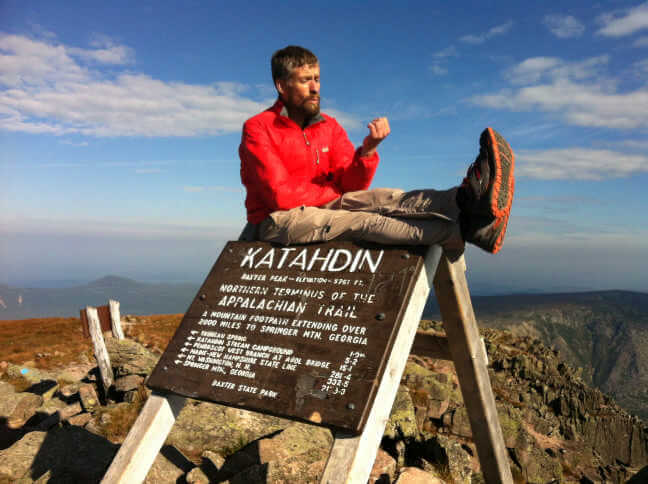
I feel so lucky to have Keith answer my questions, especially since I am such a fan of his books and because he has accomplished so much in the world of thru-hiking who better to ask??
Thru-hikes completed and mileage (or km):
El Camino de Santiago – Le Puy en Velay to Santiago (2 times) – 2000 miles
El Camino de Santiago – St Jean pied de Port to Santiago – 500 miles
Pacific Crest Trail – 2640 miles
Appalachian Trail – 2200 miles
Continental Divide Trail: 525 miles (not finished due to injury).
Which thru-hike was your first?
El Camino de Santiago – Le Puy en Velay to Santiago in 2002
How did you prepare mentally and physically for the hike(s)?
Physically it was easy and logical, I just walked! Starting three months before each thru-hike I walked for two hours each day, plus a longer hike around 15 miles each weekend, with a backpack containing several litres of water to simulate the weight. I did some cross training as well such as cycling and swimming, but refrained from running because of the increased risk of injury. I also did yoga.
I do meditate but mentally I don’t think there’s much you can do before the hike, that kicks in more when you’re actually on the trail. A strong mental attitude is needed to deal with all the possibilities that can occur on trail and I find mental strength comes, or is honed, once you’ve started.
What piece of equipment did you think you needed but never used?
A compass. El Camino was well signposted, the way usually obvious, and I took a good guidebook or asked the locals. The PCT was also well marked, as was the AT and at the time I had great guidebooks as well. Now, there’s excellent apps such as Guthook Guides.
I should say at this point that a map and compass are considered necessary by many, but I’m guilty of leaving both at home regularly!
What was your favorite piece of gear (most useful, made life a little easier)?
Often, it’s the simple things, and for me it was trail shoes, more specifically Brooks Cascadias. When I started thru-hiking I used ankle length leather boots which killed my feet, and I suffered badly from blisters. Around 2010, I started using trail shoes and in 2012 I discovered Cascadias. I wear them a size or two too big which allows my feet, which are wide at the front, to move freely. They’re way more comfortable than boots and breathe easier.
What was the hardest part about the hike?
I’d say when I started, and before I sorted my footwear out, it was blisters. I suffered on El Camino and the PCT. When I made efforts to remedy the problem, namely wearing Cascadias, shortening my daily distances at the start, hiking slower and removing my shoes during the day to allow my feet to breathe, things improved.
What was the best part about the hike?
Escaping civilization and enjoying the solitude.
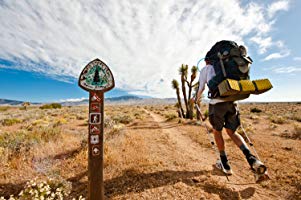
What did it teach you?
To not be afraid of following your dreams and doing what you actually want to do in life. Life on trail provides almost limitless time to think. It’s like looking back on yourself in your ‘other’ life – suddenly you realize what you’re doing wrong (and right), and have the time to figure out how to change it for the better. It teaches courage, the ability to alter how you live to make it more fulfilling.
What advice would you give someone who is planning their first long distance hike?
To set a date. I spent years dreaming about distance hiking, and all the routes I could do. Every year there was a different excuse not to start (Note: I am guilty of this for sure!). It wasn’t until I set a firm date that everything finally fell into place.
Once you’ve committed, it becomes surprisingly obvious that commitment should have been made a long time ago. The apprehension you felt making such a big decision suddenly seems insignificant, and your goal appears clear and lucid.
Make the choice, and everything falls into place.
Anything else you would like to add?
The best advice, although clichéd, it to never give up. Thru-hiking is 90% psychological, even during the bad days, if you can push yourself through, tomorrow is always another, often better, day. Your body will always hurt, but your mind can push you through it.
Hike for a week with all your equipment prior to leaving, especially if you’ve not thru-hiked before, or are using new equipment. This provides the opportunity to remedy weaknesses such as poorly performing gear, to become aware of any physical limitations, and to get a feeling for what’s expected. If anything fails to perform or goes wrong, it’s best to find out before you hit the trail itself.
Buy the lightest equipment you can find, and don’t overpack. Again, a test hike will highlight what stuff you don’t need. Packing too much weight is a recipe for disaster, and sadly often hikers don’t discover this until they’ve started, when it’s too late. Being too heavy slows you down, decreases distance, increases the chance of injury, and makes the hike less enjoyable. And don’t forget your physical condition, if you’re overweight it just makes life harder as well. Endeavor to be in top physical condition before you leave.
One last tip – take elastic bands, they’re very handy!
How can people find you?
Website and blog: https://www.keithfoskett.com/
Twitter: https://twitter.com/KeithFoskett
Facebook Page: https://www.facebook.com/Keith-Foskett-Fozzie-270894196286427/
Concluding Thoughts
If your thinking about heading out on a long hike is a great way to really slow down and enjoy nature. Though it is a long period of time and requires a lot of planning the time is 100% worth it.
Thank you!
I cannot tell you how grateful I am for the input from these hikers. Their stories gave me goosebumps and made my heart swell at the very thought of experiencing this myself. I hope it does the same for you. For a cheat sheet on preparing for your first thru hike also check on this post by Backpacker.
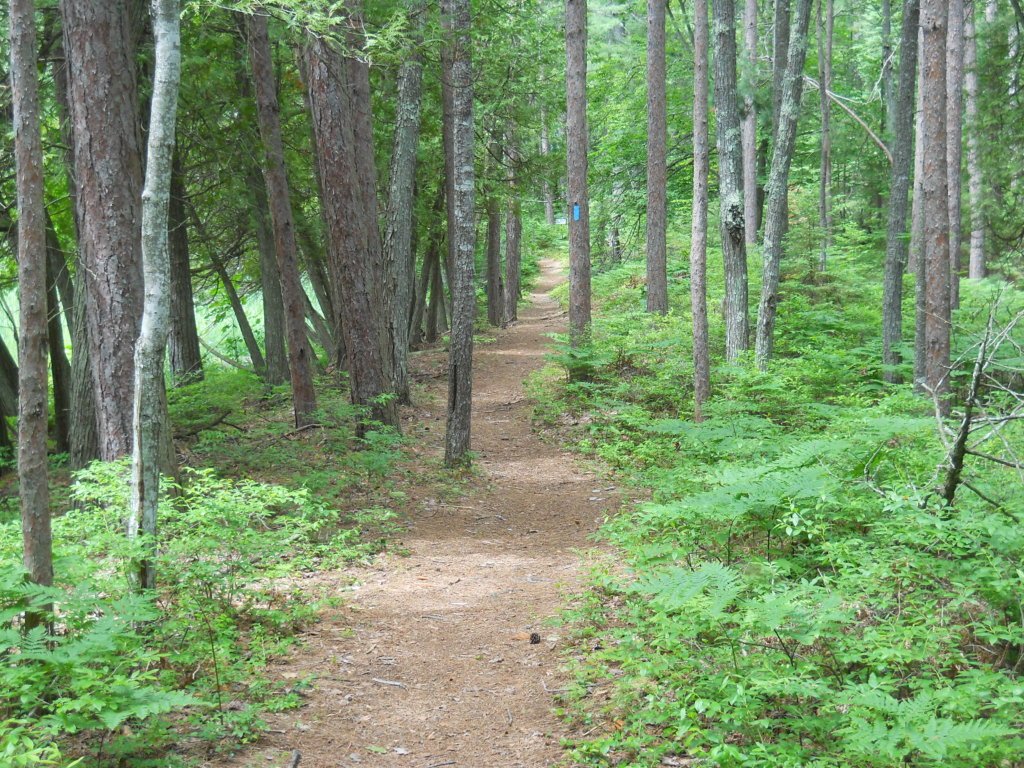

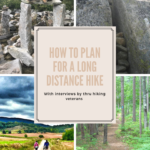

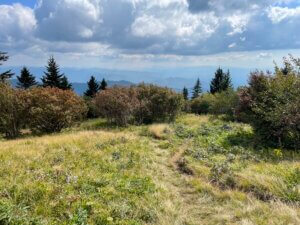
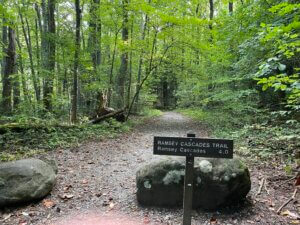
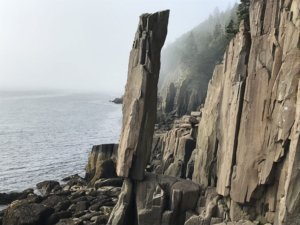
Comments
This is such a helpful post! It may have even inspired me to take on a thru-hike one day, and I’m not much of a hiker! Your details are so helpful and I really love your interviews with Strider and Laureen at the end. Their stories are inspiring! Thanks for sharing!
Author
I am so glad you found it useful! Their stories gave me goosebumps when I read them so I am glad they inspired you as well!
Pingback: I've been nominated for a Liebster Award! - Wandering with a Dromomaniac